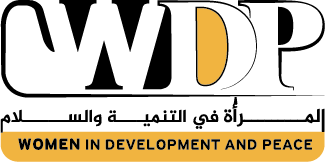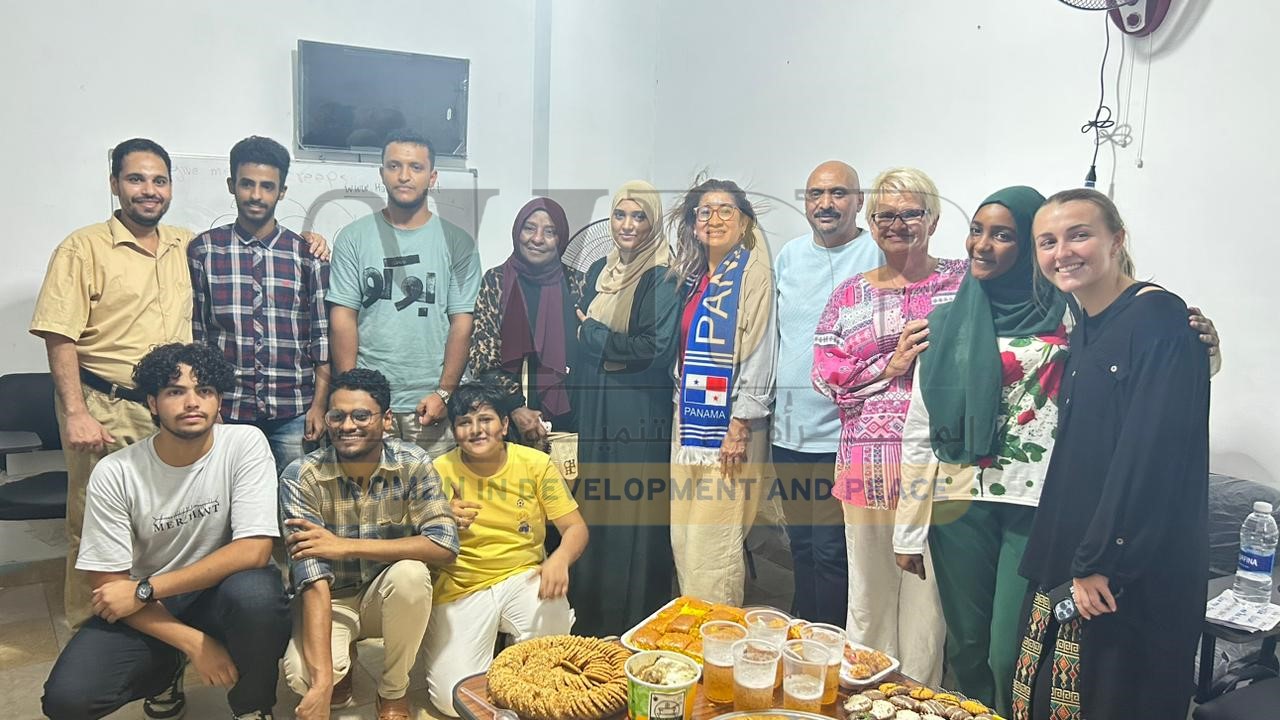
Dr. Dhikra Al-Areeqi
Associate Professor and Head of the Sociology Department, Taiz University
Consultant of “Leading Women’s Voices in the Yemeni Diaspora” Issue
.
Women’s migration has been a prominent social phenomenon in recent years, especially given the political and economic crises in Arab countries. This migration is not merely a relocation but reflects a complex interplay of social, economic, and political factors.
Migration has occurred throughout human history; however, the push and pull factors have changed, some not identified for long periods. Since 1970, migration studies have paid more attention to women’s roles, noting that migration patterns sometimes resemble men’s but often differ. This is known as the feminization of migration; women, like men, migrate seeking better futures and opportunities. Furthermore, women migrate to provide for their families back home. However, this process exposes both men and women to abuse and exploitation. Feminist research argues this vulnerability is gendered, affecting women and men differently.
Yemen’s historical and political circumstances significantly shaped migration patterns. Since its unification in 1990, the country experienced radical changes, including civil conflicts, political tensions, and economic collapses. These crises drove many families, particularly women, to seek opportunities abroad. The ongoing conflict since 2015 represents one of the world’s most complex humanitarian crises. This violent conflict has particularly affected women, especially Yemeni migrants, who face multiple challenges amidst difficult economic and social conditions.
Yemeni migrants are part of a larger migration phenomenon in Yemen. Migration is usually internal, to safer areas, or neighboring countries like Saudi Arabia and Oman. Migrants face challenges including loss of identity, discrimination, and harsh working conditions. This article aims to analyze the factors contributing to Yemeni women’s migration, focusing on current conditions and their impact on women. Factors leading to Yemeni women’s migration:
Firstly, Socio-Cultural Factors Include:
- Gender-based violence: While precise data and comprehensive reports from victims on gender-based violence are lacking due to security concerns, insufficient protection measures for victims when reporting and afterward, and cultural factors stemming from fear of social repercussions and stigma, Yemeni society is no different from any other in its practice of violence directed toward women and girls.
Violence against Yemeni women and girls is practiced in all its forms: physical, psychological, and sexual, and in all regions. Sadly, matters worsen when this violence is cloaked in religious and social cover, granting it acceptance in society, even among women themselves. Internal displacement and external refuge are forms of violence against women; women and children in internal displacement suffer intense violence, such as hunger, poverty, and widespread diseases. Some women have been forced to migrate due to the ongoing conflict, seeking refuge abroad to provide sustenance and safe housing.
The conflict has also driven many women, both displaced and those forced from their homes, to beg for a living after the economic role shifted from men to women who have lost their husbands, families, and sons. This is not to mention family breakdown and divorce due to deteriorating economic conditions. Studies indicate that domestic violence is a major reason that pushes women to migrate, with many seeking to escape violent environments and find haven in other countries where they can start new lives away from psychological and physical pressures.
- Early marriage: Early marriage is a factor that pushes girls to migrate in search of a better life. Child marriage and forced marriage are prevalent in governorates that have received large numbers of displaced people during the conflict, such as Al-Hudaida, Ibb, Hajjah, Sana’a, and Aden. Early marriage occurs among the displaced, either due to parents’ need for money and difficult economic circumstances resulting from the loss of their property and homes, or out of fear for their daughters’ safety from harassment and delinquency.
On the other hand, economic conditions play a role in reducing the dowries of girls among the displaced, contributing to encouraging the host community to marry young displaced girls due to the low cost of marriage; marrying off girls has become a source of income. Some may seek to marry their daughters into the host community to foster kinship and acceptance within the community, making them closer to its members and paving the way for the displaced family to settle permanently in the community.
- Weak educational opportunities: The lack of educational opportunities affects women’s ability to obtain jobs that match their qualifications. Migration provides them with the opportunity to obtain better education in other countries, increasing their job opportunities.
- Traditional roles: Traditional social roles play a significant role in driving women toward migration in many cases. They bear family responsibilities under difficult economic circumstances, and some women migrate in search of greater independence and decision-making power, away from social restrictions.
- Customs and traditions that support men in family and work, and the preference for males over females, may lead women to migrate in search of equal opportunities in education and work.
- Cultural factors also include the influence of social media in raising awareness about women’s issues in Yemen. These platforms provide information about opportunities abroad, encouraging women to migrate.
- Social networks play an important role in facilitating women’s migration. Women often rely on the experiences of their migrant relatives or friends, increasing their sense of security when deciding to migrate.
Secondly, Political Factors Represented by the Ongoing Conflict in Yemen:
- Family breakdown: Many women lost their husbands or family members due to the conflict, increasing their burdens and responsibilities, pushing them to migrate seeking safety and stability.
- Direct targeting and killing of women: A significant number of women are killed during the conflict by various warring parties, and some are disabled. For example, Taiz Governorate has the highest rate of female casualties. Reports from some organizations (the Information and Rehabilitation Center for Human Rights, a non-governmental civil society organization based in Taiz) reveal that violence against women in Yemen in recent years includes the direct killing of hundreds of women, whether by sniping or shelling, as well as the amputation of limbs due to extensive minefields surrounding inhabited villages and city entrances.
- Physical, psychological, and sexual assault: Rape occurs due to the conflict; women are beaten, assaulted, and chased simply for demanding rights or making public demands.
- Kidnapping of women and the detention of dozens: According to data from human rights organizations in various Yemeni governorates, there are over two hundred women who are kidnapped, hidden, or subjected to repressive pursuit, placing them in real danger of losing their lives.
- Torture and sexual violence during detention: Women, like men, face torture and sexual violence during detention, according to the second annual report on the status of women in politics in the Arab region issued by the Expert Team, which investigated 12 cases of sexual violence against five women.
- House arrest of dozens of female activists and leaders: They are prevented from engaging in any activity, and some face threats of physical elimination if they disobey, forcing many to migrate or seek asylum.
- Lack of women’s rights: Women in Yemen face significant challenges concerning their basic rights, and migration offers them the opportunity to live in countries that respect women’s rights and provide a better legal environment.
Thirdly, Economic Factors:
Regarding economic challenges, in addition to limited job opportunities leading to increased poverty and unemployment rates, statistics indicate that unemployment among women exceeds that of men, exacerbating poverty rates. Inflation and high prices have led women to seek work abroad to improve their financial situations and secure a better future for their families, helping them bear their household and living burdens in general.
Despite the outward migration of many women, they also face many challenges in their host countries, including:
- Economic challenges: Yemeni migrants face significant economic difficulties. Many have lost income sources due to the destruction of Yemen’s economic infrastructure. Opportunities in host countries are often insufficient or require skills that migrant women lack, leading to widespread poverty and increased reliance on humanitarian aid. Many migrant women work in informal, low-paying jobs, making them vulnerable to exploitation.
- Psychological challenges: Mental health is an important aspect affected by Yemeni migrants who have experienced violence, discrimination, and loss of hope for the future, increasing rates of anxiety and depression. Studies indicate that migrant women suffer from high levels of post-traumatic stress disorder, affecting their ability to adapt to new lives.
- Legal challenges: Many Yemeni migrants lack legal documentation, making them vulnerable to exploitation and deportation in many host countries.
- Forced marriage: Some migrants face forced marriage, increasing their suffering.
- Integration difficulties: Migrants face difficulties integrating into new societies due to cultural and linguistic differences.
Proposals and Recommendations:
- Strengthening legal protection: Host countries must provide legal protection for Yemeni migrants and guarantee their rights.
- Combating human trafficking: The phenomenon of human trafficking must be combated, and support provided to victims, especially women and girls.
- Providing services: Basic services must be provided to Yemeni migrants, such as healthcare, education, and training to enable self-reliance.
- Enhancing international cooperation between countries of origin and destination: This is to develop more humane migration policies.
- Empowering Yemeni women economically and socially: This aims to reduce the drivers of migration that increase women’s suffering in Yemen.
- Strengthening joint efforts from the international community, governments, and NGOs: This involves understanding the drivers of migration and the challenges migrants face, enabling the development of effective strategies to protect them and enhance their rights.

